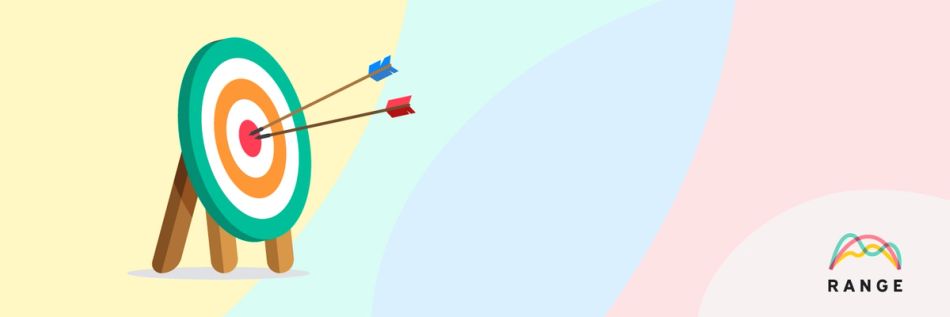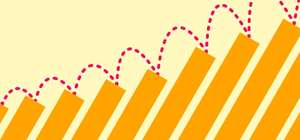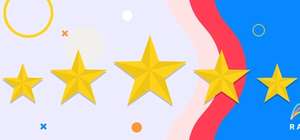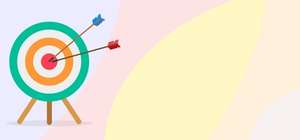
If you want to make real progress, aim for a measurable work goal.
But it takes work, which is where goal setting and goal tracking comes into play.
Without effort, the needle won’t move on your professional goals. It’s about applying effort towards the right levers than can compound and make a size-able difference – for you professionally and personally in your career.
In the list below, you'll see goal examples, plus goal types that will help you plan, both short-term and long-term.
We encourage you to rank these and think about how your effort can be compounded through the goals that you make. You’ll also find more goal-setting resources as well as an FAQ section.
What are good professional goals for work?
1. Connect your work to real business outcomes
If you work on a product or even a service business, your job probably falls into one of these 3 (big) buckets: leads, usage, retention.
There are nuances that matter for each of those, but it’s important to know the general flow through the funnel of your business.
Think about where your role falls under each of these categories: What can you do to help get new business, help people have a better experience once they’re using your product or service, and what else can you do to help retain (and lower churn) with those customers?
Setting professional goals in those areas will make you a valuable part of the team. You’ll impress your managers and team leads because you’re connecting your work with real business outcomes.
2. Learn new software
In the fall of 2022, Figma, a design software company, was purchased by Adobe for $20 billion.
This was huge news not only in the software and design world. It was huge because guess what? Times are changing. Adobe recognized that their Photoshop and Illustrator tools were being disrupted and had they had to act fast. What does that have to do with professional goals?
It means you always have to be learning or you’ll be left behind. Software that was the standard 10 or even 5 years ago may not be relevant anymore.
Slack replaced a lot of inter-office email, and Microsoft Teams has even overtaken Slack. With Asana and Trello, task management software is the norm, not the aberration.
You think Google Docs and Microsoft Word are the standard? Tools like Notion, Coda, and Airtable have mashed spreadsheets, databases, docs, and notes together.
Engineers have to keep up to date on the latest languages, along with bug tracking or issues.
Which tools should you learn? It depends on your industry of course, but Range is there to help you integrate all of your tools together to eliminate the noise.
3. Take online courses related to your work
Online courses are another way to sharpen your mental agility. It continues to increase, exceeding pre-pandemic levels, while offering tangible ways to overcome skills gaps.
Many know about elite courses in UX design, cyber security, and programming, but another burgeoning area is leveling up with hands-on creators.
Taking a course or a new cohort is a great professional development goal.
Recommended sites for professional looking to up their game:
- Reforge
- Codeacademy
- Section 4
- Maven
Skillshare or Udemy usually has hobbyist-type courses. If you’re looking for more of an official seal of approval, several top universities now offer certificate programs for executive MBAs, and specialized programming. Even Harvard does this now!
4. Read books and articles about your industry
If you can’t afford a course (or need cheaper options) a book is a good way to go about it.
There are more classics in book form than in course formats, of course. If you’re looking for business strategy, leadership, management, finance, sales, or marketing than books will still provide you with lots of valuable tips and techniques.
Programming Books
Programming changes so quickly that the specifics will be outdated by the time they reach you–forums, Slack/Discord groups, or discussion boards will be more useful.
Books like these may help you in the overall programming strategy and how you approach your work.
Management books
There are so many management books, it’s impossible to keep track. Here are recommended business books by noted productivity guru James Clear. His selections cover everything from the lifecycle of a business to the laws of marketing.
5. Discuss career development with manager
In most modern organizations, this goes without saying – but this could also be more than a routine review. It could be valuable to set tangible benchmarks for your current role, but also what you need to achieve for the next level.
Consider it a mentor/mentee situation. Many team leads and team members fall into a status update mentality, and never really discuss bigger picture questions. Make it a goal to do so on a regular basis.
This should be an essential part of your review cycle and will help you clarify your roles and responsibilities for the upcoming year. It will also help you understand areas of improvement and can provide you with valuable inputs on goal creation.
6. Speak more often in meetings. Speak less in meetings.
For the shy, silent or introverted types, you may need to express yourself more readily. Your thought processes and goals are valuable currency for your team and teammates as they make decisions on the product or direction of the company.
On the flip side, perhaps more self awareness is needed for those that speak often in meetings. Who haven’t you heard of in awhile? Maybe get their opinion on the topic at hand.
Recognizing who is dominating or who is hiding in the conversation can be a good professional goal.
7. Take on extra assignments at work to build skill
This is a hard one to balance. With company layoffs often come more responsibilities, whether you want them or not.
Think about how to balance what needs to be done vs what you would like to learn.
In the age of quiet quitting, it may be a good idea to experiment with new assignments rather than just maintaining what you have. This has the potential to open new skills, but could also lead to burnout if you take on too much too fast.
8. Increase your productivity (or get more organized)
Here’s a tip: If you want to increase your productivity, it’s about the system, not exactly the work that you do. Organizing your work in a more efficient way will help you get more done.
There are lots of strategies to do this: Timeblocking, timeboxing, Get Things, the Eisenhower Matrix, the Ivy Lee Method, PARA, MIT.
Then the tools! To-do lists, online planners, daily team check-ins, paper planners, loads of task tracking software.
Whatever it is, find something that works for you personally and then actually do it.
Setting a rhythm for yourself will help you get more done.
When considering what to do, also remember to manage your energy, not just your time.
9. Expand your professional network
You could join an in-person local meetup for programmers, or it could be an online platform.
Being part of the conversation whether through in-person meetings or providing good answers online can help you solidify your own thinking as well become a trusted expert for others.
Eventbrite is a valuable local meetup tool.
But one of the fastest ways to do this is to join LinkedIn or Twitter. You can begin sharing your thoughts and commenting on others. While a tool like Twitter used to be for a variety of topics, if you niche down into a handful of topics, you’ll become more well-known in that particular area, increasing your professional network. You can do the same on LinkedIn.
If that doesn’t jibe with your aesthetics, you can also be active in an online community – Slack, Discord, specific blogs or Substacks– that match your professional interests.
Track your goals with Range
Map your day to day workflow to your goals so you’re always putting the right work first.
Goals in Range is used by teams to create, manage, and track the progress of goals and OKRs.
With Goals in Range, you can:
- Show how your work ladders up to goals
- Connect your work to goals with hashtags
- Attach goals to check-in items keeps you accountable to focusing on the right work
- Use goal history provides teams with a full view of status updates and progress
⭐️ Put your goals at the forefront of decision-making
⚡️ Start with Range today.
Professional Goals for Work FAQs
What is a performance goal? 
A performance goal is a specific, measurable, attainable, relevant, and time-bound goal that is used to track and improve employee performance. While performance goals can be set for individuals or teams, they are most effective when they are aligned with the organization's overall strategy.
When setting performance goals, it is important to keep in mind the SMART goal-setting framework: specific, measurable, attainable, relevant, and time-bound.
This will ensure that your performance goals are clear, achievable, and aligned with your company's objectives. Performance goals can help to improve employee engagement and motivation while also providing a way to measure and track progress. When used effectively, performance goals can be a powerful tool for driving business success.
What's the difference between a personal goal and a professional development goal? 
Personal goals are objectives that an individual sets for themselves in order to achieve personal growth and development. Professional development goals, on the other hand, are objectives set by an individual in order to improve their skills and progress in their career. While personal goals can be set at any time, professional development goals are often set as part of an annual performance review or during a goal-setting session with a boss or supervisor.
Goal setting is an important part of both personal and professional development. When setting goals, it is important to be realistic and specific.
For example, rather than setting a goal to “get in shape,” it would be more effective to set a goal to “lose 10 pounds by May 1st.” This type of specific, measurable goal is more likely to lead to success than a general goal.
Personal and professional goals can overlap, but it is important to maintain a balance between the two.
For example, a personal goal might be to “spend more time with family and friends,” while a professional development goal might be to “earn a promotion by the end of the year.” By setting both personal and professional goals, you can ensure that you are working towards a well-rounded development plan.
What's the difference between short-term and long-term goals? 
When it comes to goal setting, it is important to differentiate between short-term and long-term goals. Short-term goals are those that can be accomplished within a year or less, while long-term goals usually take longer than a year to achieve.
Both types of goals are important for helping you achieve your overall objectives.
Short-term goals can help you stay focused and on track in the short term, while long-term goals keep you motivated and moving forward in the long term. In order to set effective goals, it is important to consider what you want to achieve and how much time you have to devote to achieving it. By clearly defining your goals, you can increase your chances of achieving them.
What are other helpful resources on goal-setting? 
Range has quite a few articles on goal-setting and goal tracking. These will help your teams:








